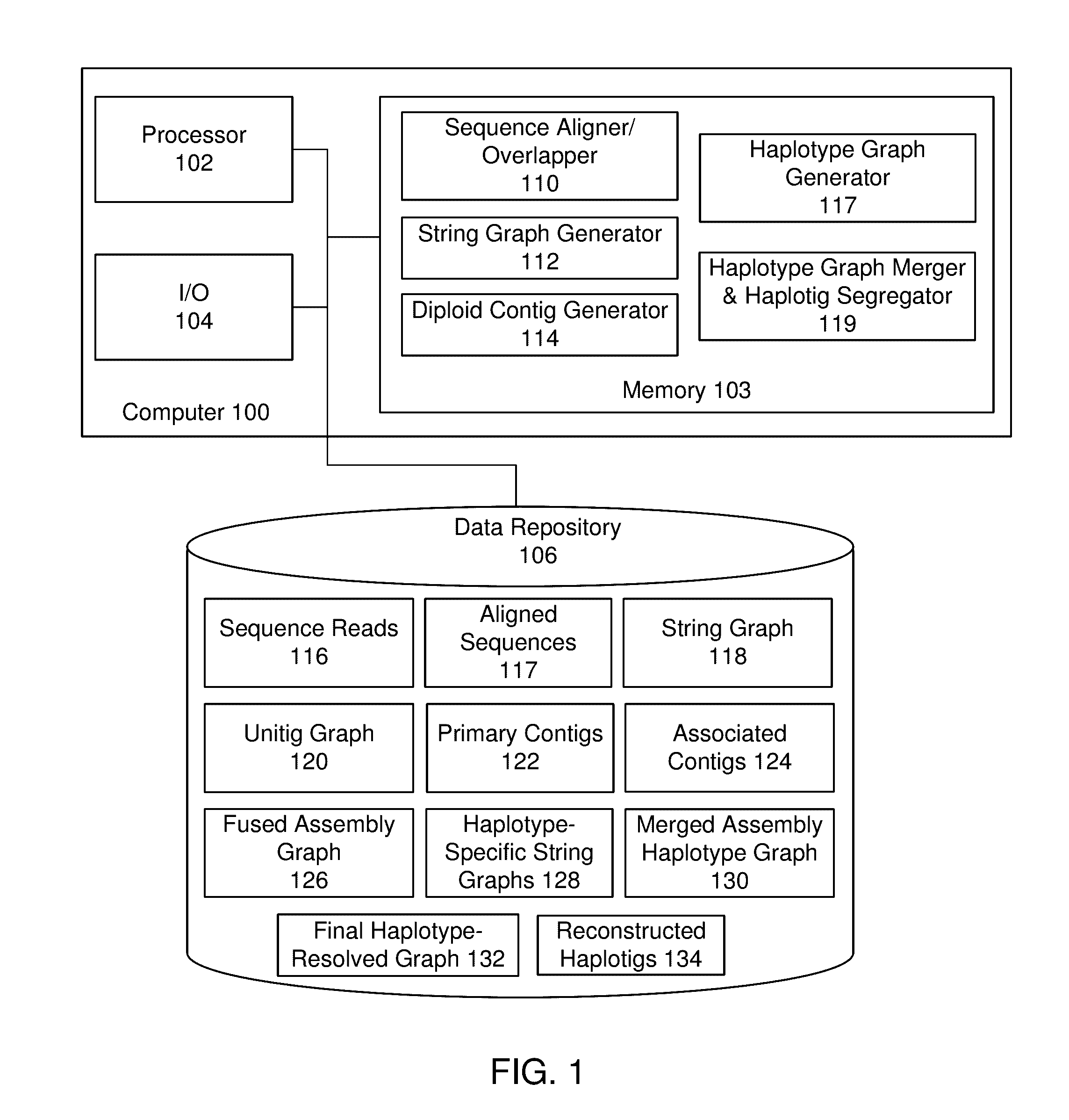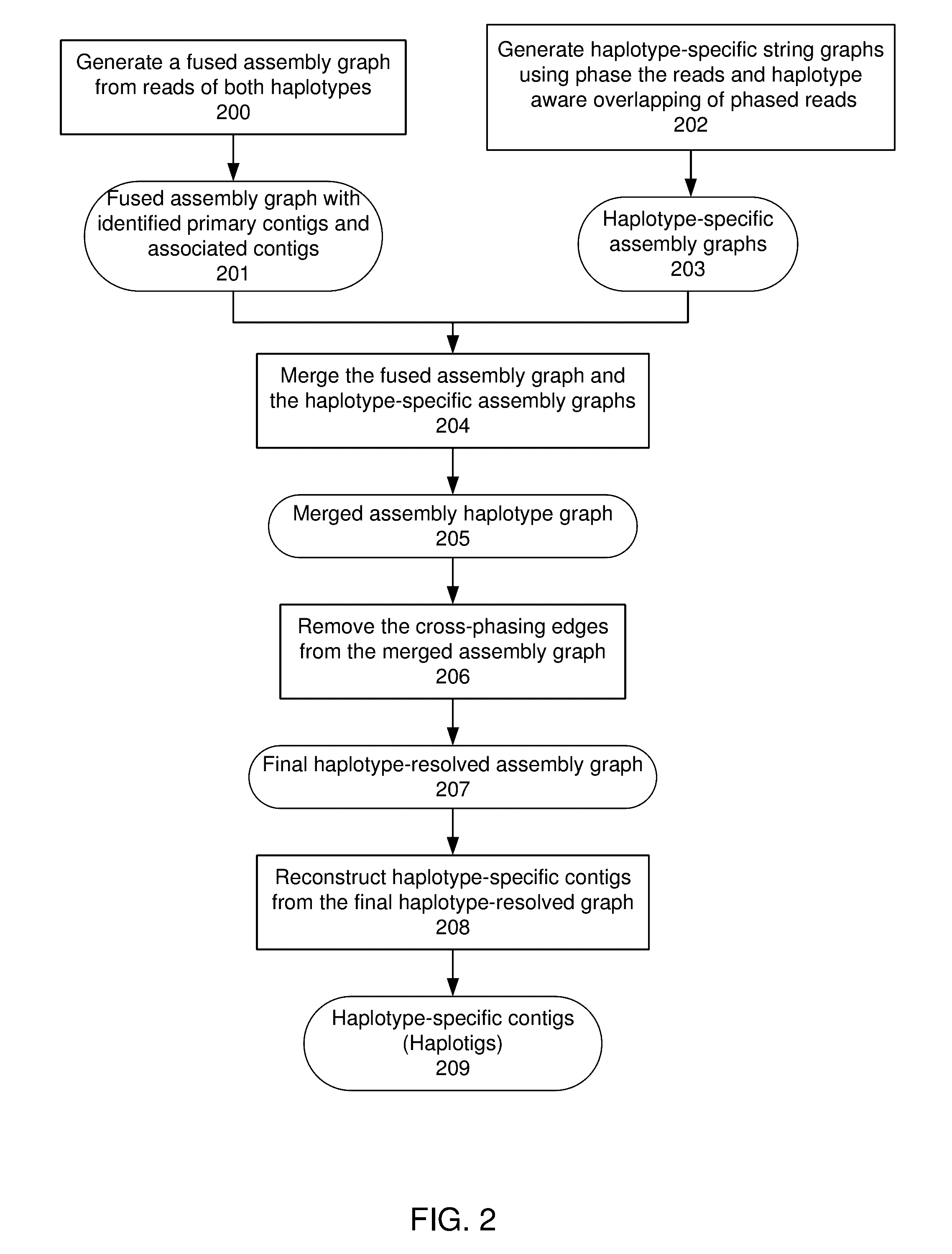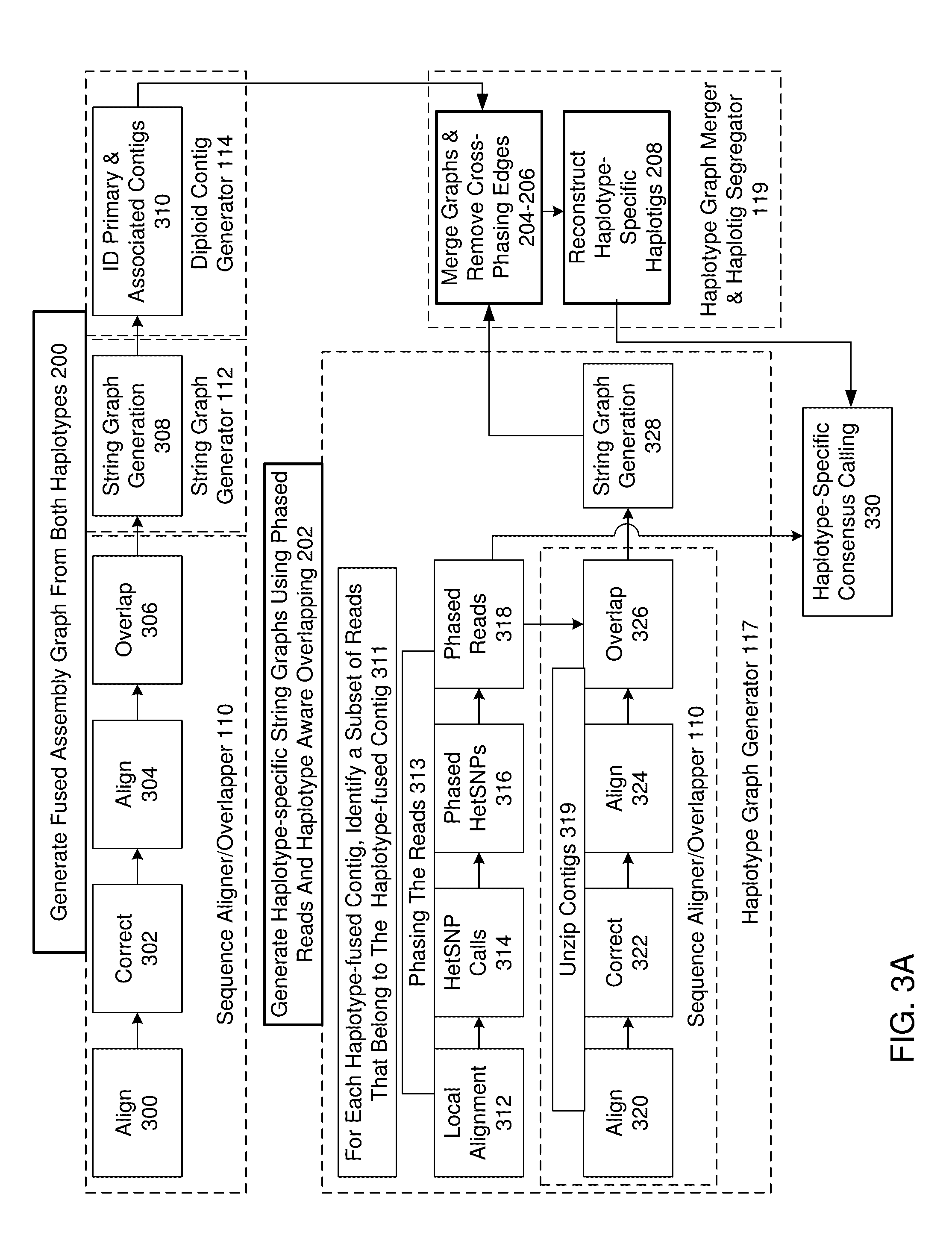De novo diploid genome assembly and haplotype sequence reconstruction
a technology of haplotype and genome assembly, applied in the field of biomolecule sequence determination, can solve the problems of complex designation of base-call as true variant, high cost, and high cost of base-call, and achieve the effect of avoiding errors in real-world raw sequencing data, ensuring accuracy, and carefully monitoring the quality of sequence information
- Summary
- Abstract
- Description
- Claims
- Application Information
AI Technical Summary
Benefits of technology
Problems solved by technology
Method used
Image
Examples
embodiment 1
Identifying String Bundles and Determining Primary and Associated Contigs
[0101]FIG. 11B is a diagram graph illustrating the processing of string bundles, which comprise bubbles as well as “non-bubble” portions. The process may include analyzing each of the string bundles 1110 to determine a primary contig 1112 for each string bundle 1110 (FIG. 11A, block 1102A). In one embodiment determining the primary contig comprises assigning edges in the corresponding string bundle to the primary contig that form a contiguous, end-to-end “best path” sequence that extends the a length of the string bundle. Consequently, a primary contig is a path through a string bundle that explains most of the read overlaps and may represent the sequence of a particular strand of the sample nucleic acid used to generate the sequence read data. Rules for traversing the graph to find the best paths for the contigs can be determined by the ordinary practitioner based on well-established statistical models and met...
embodiment 2
Identifying String Bundles and Determining Primary and Associated Contigs
[0109]FIG. 12B is a diagram graph illustrating the processing of string bundles according to a second embodiment. In the second embodiment for identifying string bundles and determining primary and associated contigs, the goal is to first identify bubble regions as compound paths. One purpose of this is to attempt to decompose the string graph into simple paths and simple bubbles. However, the string graph for a diploid genome with complicated heterozyguous structure variations or repeat structures may not be easy to decompose into simple path and simple bubbles due to possible subgraph motifs.
[0110]For example, it is possible to have nested bubbles, loops, tangled bubbles, and long branches between a source node and a sink node, in which case, the bubbles may be caused some repeats at the branching point rather than local structure variation between the haplotypes. The following is one approach for solving thi...
example
The Methods Described Herein were Used to Perform Sequence
[0149]analysis of the 120 Mb Arabidopsis genome. The strategy comprised generating a “synthetic” diploid dataset by using two inbred strains of Arabidopsis, Ler-0 and Col-0. The two strains were sequenced separately, then sequencing reads generated for each were pooled and subjected to pre-assembly followed by the string graph diploid assembly strategy described herein to determine if this strategy could correctly assemble the two strains from the pooled read data.
[0150]After pre-assembly, the sequence reads used as input in the diploid assembly process ranged from about 10 kb to about 22 kb, with the majority of the reads between 10 and 15 kb. The unitig graph shown in FIG. 10A was constructed from a string graph generated using the pooled sequencing reads. The next step was to find an end-to-end path though the unitig graph along which a string bundle could be built. The compound paths of the string bundle contained sequenc...
PUM
 Login to View More
Login to View More Abstract
Description
Claims
Application Information
 Login to View More
Login to View More - R&D
- Intellectual Property
- Life Sciences
- Materials
- Tech Scout
- Unparalleled Data Quality
- Higher Quality Content
- 60% Fewer Hallucinations
Browse by: Latest US Patents, China's latest patents, Technical Efficacy Thesaurus, Application Domain, Technology Topic, Popular Technical Reports.
© 2025 PatSnap. All rights reserved.Legal|Privacy policy|Modern Slavery Act Transparency Statement|Sitemap|About US| Contact US: help@patsnap.com



